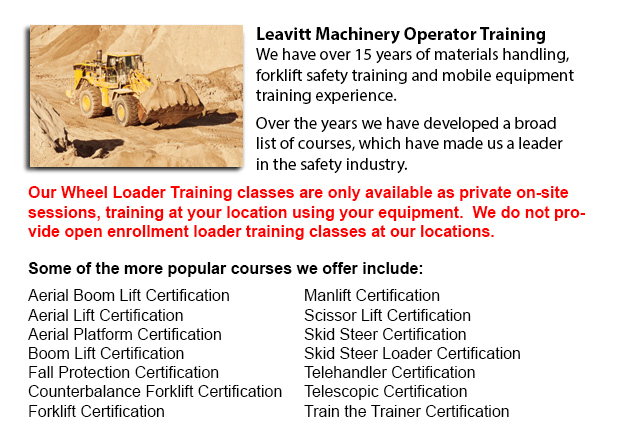
Lift trucks are available in various load capacities and different models. Nearly all lift trucks in a regular warehouse setting have load capacities between one to five tons. Larger scale units are utilized for heavier loads, like for example loading shipping containers, could have up to 50 tons lift capacity.
The operator can use a control to raise and lower the tines, that can likewise be referred to as "blades or tines". The operator of the forklift could tilt the mast to be able to compensate for a heavy loads tendency to tilt the tines downward. Tilt provides an ability to function on rough ground too. There are annual contests for skillful lift truck operators to contend in timed challenges as well as obstacle courses at regional lift truck rodeo events.
General utilization
All forklifts are rated for safety. There is a particular load limit and a specific forward center of gravity. This vital info is provided by the manufacturer and placed on the nameplate. It is vital loads do not go beyond these specifications. It is unlawful in numerous jurisdictions to tamper with or take out the nameplate without obtaining permission from the forklift manufacturer.
Most forklifts have rear-wheel steering to be able to increase maneuverability inside tight cornering situations and confined spaces. This type of steering differs from a drivers' first experience together with different vehicles. In view of the fact that there is no caster action while steering, it is no essential to apply steering force in order to maintain a continuous rate of turn.
Another unique characteristic common with lift truck use is unsteadiness. A constant change in center of gravity occurs between the load and the lift truck and they should be considered a unit during utilization. A forklift with a raised load has centrifugal and gravitational forces which could converge to bring about a disastrous tipping accident. So as to avoid this possibility, a lift truck should never negotiate a turn at speed with its load elevated.
Forklifts are carefully built with a load limit used for the forks. This limit is lessened with undercutting of the load, which means the load does not butt against the fork "L," and likewise lessens with blade elevation. Generally, a loading plate to consult for loading reference is situated on the forklift. It is dangerous to make use of a forklift as a worker lift without first fitting it with certain safety tools such as a "cherry picker" or "cage."
Forklift utilize in distribution centers and warehouses
Lift trucks are an essential part of distribution centers and warehouses. It is important that the work situation they are located in is designed to be able to accommodate their efficient and safe movement. With Drive-In/Drive-Thru Racking, a forklift needs to travel inside a storage bay which is multiple pallet positions deep to put down or obtain a pallet. Operators are normally guided into the bay through rails on the floor and the pallet is placed on cantilevered arms or rails. These confined manoeuvres need skillful operators so as to complete the task efficiently and safely. Since every pallet needs the truck to go in the storage structure, damage done here is more common than with various types of storage. Whenever designing a drive-in system, considering the measurements of the tine truck, including overall width and mast width, need to be well thought out in order to make certain all aspects of a safe and effective storage facility.
-
Forklift Certification Courses Mississauga
Forklift Certification Courses Mississauga - Forklift certification courses really help to be able to make certain that businesses operating forklifts, follow the local and regional rules. The operators of the forklift must go through forklift certif... More -
Heavy Equipment Certification Mississauga
Heavy Equipment Certification Mississauga - Big pieces of machinery and heavy-duty vehicles are often referred to as heavy equipment. This broad term covers utility vehicles from agricultural and forestry implements to construction equipment, civil e... More -
Skid Steer Loader Training in Mississauga
The engine powered skid-steer loader has a rigid and small frame, outfitted together with lift arms that can attach to lots of industrial attachments and tools to perform numerous labor saving tasks. Usually, skid-steer loaders are four-wheel drive v... More -
Bucket Truck Training Mississauga
Bucket Truck Training Mississauga - The Vehicle-Mounted Aerial Work Platform or bucket truck training program is designed to decrease the possibility of incident and personal injury when working with or in close proximity to bucket trucks by efficien... More -
Scissor Lift Certification Mississauga
Scissor Lift Certification Mississauga - Scissor lift platforms are used at work locations to enable tradespeople - like for example welders, masons and iron workers - to reach their work. Utilizing a scissor lift platform is typically secondary to t... More -
Order Picker License Mississauga
Order Picker License Mississauga - Order preparation operation or order picking as it is more normally known is a process used within warehouse operations and comprises personnel called order pickers. The order picker's job is to take and collect art... More -
Forklift Train The Trainer Mississauga
Forklift Train The Trainer Mississauga - Our company provides the most advanced and latest Forklift Training courses in North America. We provide industrial workplace safety training, Train the Trainer, mobile equipment operator, and self study train... More -
Aerial Platform Training Mississauga
Aerial Platform Training Mississauga - Aerial forklifts are able to accommodate numerous odd jobs involving high and tricky reaching spaces. Normally utilized to execute daily maintenance in buildings with tall ceilings, trim tree branches, hoist hea... More

Forklift Training Mississauga
TOLL FREE: 1-888-254-6157
Mississauga, Ontario
forklifttrainingmississauga.ca
Email Us
About Us


